Ranking all 129 college coaches … as players – ESPN
Here’s a #protip for those attempting to forecast which current college players will become FBS head coaches: Don’t look in the obvious places.
If the current FBS coaches are any indication, start brushing up on Drake’s roster or Central Arkansas’ or Mount Union’s. If you think Millikin and Muskingum are bacterial infections, you’re wrong. Those two Division III schools have combined to produce three current FBS coaches — that’s three more than Texas or Ohio State. Once you’ve digested the Division III landscape, check out the NAIA, Division II and FCS. Plenty of top-tier college coaches played in the sport’s lower rungs.
Don’t write off the Power 5. but if you’re looking for future coaches, find walk-ons who quickly earn scholarships, eventually become team captains and excel academically. There are 41 current FBS coaches who played quarterback in college, by far the most of any position. Other feeder positions include linebacker and safety. There are only five FBS coaches who played line in college.
NFL potential isn’t a prerequisite for future coaches. It’s just the opposite. Only one current coach had a substantial NFL career; that dude wears khakis now. Most coaches weren’t elite players. Steve Spurrier’s resignation at South Carolina removed the lone Heisman Trophy winner from the coaching rankings.
Now to why we’re here: to rank every college coach as a football player. The rankings considered a coach’s entire playing career: high school, college and (where applicable) pro. By far the biggest challenge was accounting for the level of college competition. What’s better: a player who starred in Division II or Division III or one who reached the sport’s biggest stage but remained largely outside the spotlight?
These rankings accentuated FBS/Power 5 competition as well as pro experience while also recognizing coaches who were truly elite at lower levels. Non-FBS players who earned national honors, especially in multiple years, were rewarded, and so were those who lettered all four years. Those who played at lower levels without notable accolades backslid.
Illinois’ quick coaching change allowed all 129 coaches to be included (UAB’s Bill Clark, while not competing currently, is ranked).
Let’s get started.
To jump directly to the top 10, click here

129. Mike Leach, Washington State Cougars: There’s nothing traditional about Leach, including his background. He played rugby, not football, at BYU after a Wyoming high school career as a reserve.
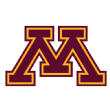
128. Tracy Claeys, Minnesota Golden Gophers: A lineman at Clay Center High School in Kansas, Claeys later attended both Kansas and Kansas State but didn’t play for either college. He was a student coach for eventual Minnesota coach Glen Mason at Kansas.

127. David Cutcliffe, Duke Blue Devils: Cutcliffe played football at Banks High School in Birmingham, Alabama. He went on to the University of Alabama, where he didn’t play but worked as a student assistant for Bear Bryant.
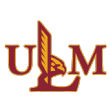
126. Matt Viator, Louisiana-Monroe Warhawks: Viator played quarterback for Sam Houston High School in Moss Bluff, Louisiana, and graduated in 1982. He then attended McNeese State but didn’t compete for the school where his father, Nolan, played and coached.
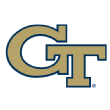
125. Paul Johnson, Georgia Tech Yellow Jackets: Johnson graduated from Western Carolina but didn’t play football there. He played football, baseball and basketball at Avery County High School in North Carolina.

124. Chad Morris, SMU Mustangs: Morris played quarterback for Edgewood High School in Texas. He then attended Texas A&M but didn’t compete for the Aggies.

123. Bill Clark, UAB Blazers: Clark played offensive line in high school for his father, Ragan, and earned all-state honors. A back injury ended his career, and he didn’t compete for Jacksonville State.

122. Hugh Freeze, Ole Miss Rebels: Freeze played football and other sports at Senatobia High School in Mississippi, and he played baseball at Northwest Mississippi Community College. He didn’t play football collegiately, including at Southern Miss, where he earned his degree in 1992.
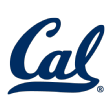
121. Sonny Dykes, California Golden Bears: After playing both football and baseball in high school, Dykes stuck to the diamond at Texas Tech, where he earned two letters as a first baseman from 1989 to ’90. He started coaching baseball before transitioning to football.

120. Philip Montgomery, Tulsa Golden Hurricane: Montgomery played quarterback and free safety for Division II Tarleton State in Stephenville, Texas, but did not earn a letter.

119. Tommy Tuberville, Cincinnati Bearcats: Tuberville was a Southern Arkansas Mulerider, and he played free safety for the then-NAIA school from 1972 to 1975. He also spent two years on the golf team.

118. Bill Snyder, Kansas State Wildcats: Snyder went to Missouri as a reserve quarterback and, as unfathomable as it might seem now, flunked out after a year. He ended up at William Jewell College in Liberty, Missouri, an NAIA school where he played defensive back and halfback.
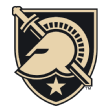
117. Jeff Monken, Army Black Knights: Monken played wide receiver for four years at Division III Millikin University in Decatur, Illinois. He earned two letters in track and captained the track team in 1989.
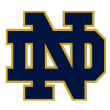
116. Brian Kelly, Notre Dame Fighting Irish: Kelly stood out at middle linebacker for the club team at Assumption College in Massachusetts, where he set a school tackles record (314). He twice earned all-league honors and served as a captain in 1981-82, when the team went 15-4-1.

115. Butch Jones, Tennessee Volunteers: Jones earned two letters at Division II Ferris State in Michigan by playing running back and wide receiver in 1986-87. A knee injury ended his playing career.

114. Dave Clawson, Wake Forest Demon Deacons: Clawson was a defensive back for Division III Williams College in Massachusetts from 1985 to ’88. He also played basketball at Williams.
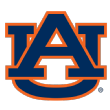
113. Gus Malzahn, Auburn Tigers: Malzahn walked on at Arkansas as a wide receiver in 1984 but transferred to Division II Henderson State. He received two letters there as a punter and a wide receiver and earned honorable mention all-league honors in 1989.
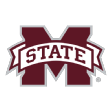
112. Dan Mullen, Mississippi State Bulldogs: Mullen was a two-year starter at tight end for Division III Ursinus College in Collegeville, Pennsylvania. He earned first-team all-league honors as a senior in 1993.

111. Jim McElwain, Florida Gators: The Montana native was a reserve quarterback for Eastern Washington, then a Division II independent, from 1980 to ’83.
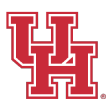
110. Tom Herman, Houston Cougars: Despite 13 knee surgeries and four shoulder surgeries as a high school and college player, Herman managed to earn all-league honors as a wide receiver for Division III Cal Lutheran in Thousand Oaks, California.

109. Steve Addazio, Boston College Eagles: Addazio started on both the offensive and defensive lines for Central Connecticut State, then a Division II school. He received tryouts with the New England Patriots and teams in both the USFL and CFL.
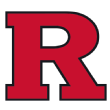
108. Chris Ash, Rutgers Scarlet Knights: One of three FBS coaches to play college ball at FCS Drake University in Iowa, Ash earned two letters as a defensive back.

107. Brian Polian, Nevada Wolf Pack: Polian played linebacker for Division III John Carroll University in Ohio from 1993 to 1996. He made the all-conference team as a senior and twice helped John Carroll to top-10 finishes in the Division III rankings.

106. Dave Doeren, NC State Wolfpack: Doeren played tight end at FCS Drake from 1990 to ’93 and recorded 19 career receptions for 237 yards. He earned four letters at the school.
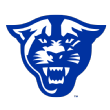
105. Trent Miles, Georgia State Panthers: The Terre Haute, Indiana, native stayed home and played wide receiver for Indiana State from 1982 to ’86. Miles played on teams that reached the FCS playoffs in consecutive years (1983-84).
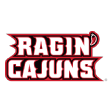
104. Mark Hudspeth, Louisiana Lafayette Ragin’ Cajuns: Still known for his physical prowess in the weight room, Hudspeth played for Division II Delta State in Mississippi from 1987 to ’91. He started at safety as a junior and at quarterback as a senior.

103. Derek Mason, Vanderbilt Commodores: The Phoenix native played defensive back at Northern Arizona from 1989 to ’92. He started two seasons and lettered in four. He also ran track at NAU.
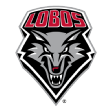
102. Bob Davie, New Mexico Lobos: A multisport prep star in Pennsylvania, Davie went to Arizona to play football but quickly left and landed at then-Division II Youngstown State. He started three years at tight end for the Penguins, reached the D-II playoffs in 1974 and recorded 21 receptions as a senior in 1975.

101. Dana Holgorsen, West Virginia Mountaineers: Before coaching the Air Raid offense, Holgorsen learned it as a wide receiver for Hal Mumme (and assistant Mike Leach) at NAIA Iowa Wesleyan from 1990 to 1992. He finished with 145 career receptions for 1,711 yards.
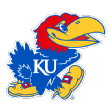
100. David Beaty, Kansas Jayhawks: Beaty played for Division III Lindenwood University in St. Charles, Missouri, where he started four seasons at wide receiver and led the team in receptions three times. He was a captain in his final two seasons (1992-93).
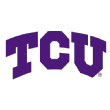
99. Gary Patterson, TCU Horned Frogs: The Rozel, Kansas, native played two seasons (1978-79) at Dodge City Community College before transferring to Kansas State, where he walked on as a linebacker and safety. He didn’t letter in two seasons at K-State.

98. Chris Creighton, Eastern Michigan Eagles: Creighton quarterbacked Division III Kenyon College in Ohio to its only conference title in 1989. He earned All-America honors and set single-season team passing records for yards and touchdowns. Creighton later served as player-coach for the Limhamn Griffins in Sweden and guided the team to its first national championship in 1993.
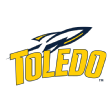
97. Jason Candle, Toledo Rockets: Like his Toledo predecessor, Matt Campbell, Candle blossomed at Division III Mount Union, where he won two national titles (2000-01) as a wide receiver. Candle earned all-conference honors in 2001 as the team’s top wideout.
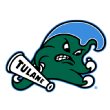
96. Willie Fritz, Tulane Green Wave: Fritz started four years at defensive back for Pittsburg State, an NAIA program in Kansas, and twice earned all-league honors. The Gorillas won two league titles and reached the NAIA national finals during Fritz’s senior season in 1981.

95. Frank Wilson, Texas-San Antonio Roadrunners: A decorated player at two schools, Wilson first earned NAIA Division II All-America honorable mention honors at running back for Geneva College in Pennsylvania. He then earned three letters for FCS Nicholls State and was an all-league running back as a sophomore in 1994. Wilson also played defensive back.

94. Darrell Hazell, Purdue Boilermakers: Hazell played wide receiver for Division III Muskingum University in Ohio. He earned all-league honors three times and honorable mention All-America honors as a senior captain in 1985. He still holds the team’s single-season receiving yards record (803).
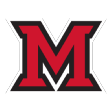
93. Chuck Martin, Miami (OH) Redhawks: Martin earned All-America honors at safety and all-league honors at kicker for Division III Millikin, where he played from 1986 to ’89. He entered Millikin’s Hall of Fame in 2008.

92. Urban Meyer, Ohio State Buckeyes: When a baseball career ended after two years in the minor leagues, Meyer went to Cincinnati and walked onto the football team as a safety. He earned a letter in 1984 and later became a student coach.
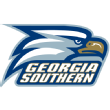
91. Tyson Summers, Georgia Southern Eagles: Summers earned four letters as a linebacker for Division II Presbyterian University in South Carolina. He earned all-league honors in 1999 and was a team captain as a senior in 2001.

90. Everett Withers, Texas State Bobcats: Withers earned four letters as a defensive back for then-FCS Appalachian State from 1981 to ’84. He served as a team captain in his final season.

89. Lance Leipold, Buffalo Bulls: Before making Wisconsin-Whitewater into a Division III power as coach, Leipold starred at quarterback there. He played from 1983 to 1986, helped the Warhawks to a league title in 1984 and finished in the top 10 in several passing categories.

88. David Bailiff, Rice Owls: Bailiff played offensive line and tight end for Texas State (then known as Southwest Texas State) from 1977 to ’80 and served as a captain his final year. He earned all-league and Division II honorable mention All-America honors.

87. Larry Fedora, North Carolina Tar Heels: Fedora played wide receiver for NAIA Austin College in Sherman, Texas, from 1981 to 1984. He earned honorable mention All-America honors his final two seasons and won a national championship as a freshman.

86. Mike Norvell, Memphis Tigers: A wide receiver at Division II Central Arkansas, Norvell still owns the team’s career receptions record (213). He earned freshman of the year honors in the Gulf South Conference and helped Central Arkansas to a league title as a senior.

85. Charlie Partridge, Florida Atlantic Owls: Yet another Drake product, Partridge started three seasons at defensive lineman for the Bulldogs. He earned NSCA All-America honors and served as a team captain in 1994.

84. Charlie Strong, Texas Longhorns: Strong was a three-time all-conference safety at NAIA Central Arkansas. He twice helped the Bears to the playoffs, was an all-league performer in track and entered the Central Arkansas Hall of Fame in 2009.

83. Mike Jinks, Bowling Green Falcons: Jinks spent two seasons (1993-94) as the starting quarterback for Division II power Angelo State in San Angelo, Texas. He earned honorable mention All-America honors as a senior and ranks 11th on the school’s career passing yards list (3,399).

82. Blake Anderson, Arkansas State Red Wolves: Anderson spent two seasons at Baylor as a quarterback and wide receiver but transferred to Sam Houston State following a knee injury. He earned two letters as a wideout at Sam Houston State.

81. Mark Whipple, Massachusetts Minutemen: The only current FBS coach to play in the Ivy League, Whipple spent two seasons (1977-78) as Brown’s starting quarterback. He led the Bears to a 13-5 record, accounted for 23 career touchdowns and twice earned honorable mention All-Ivy honors. Whipple also started at shortstop for Brown’s baseball team.

80. Mark Helfrich, Oregon Ducks: After turning down a walk-on opportunity at Oregon, Helfrich played quarterback for NAIA Southern Oregon. He earned honorable mention All-America and all-league honors as a senior, when he led the nation in total offense (3,196 yards). Helfrich also served as a player-coach for the Vienna Vikings of Austria in 1997.
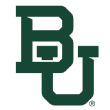
79. Art Briles, Baylor Bears: An all-state high school quarterback who played for his father, Briles switched to wide receiver at Houston. He struggled with injuries but was on a team that won the Southwest Conference (in its debut as a member) and a Cotton Bowl championship. Briles lettered in 1975.

78. Chris Petersen, Washington Huskies: Petersen made his mark as a quarterback for then-Division II UC-Davis, where in 1986 he earned league player of the year honors and was named the school’s male athlete of the year. His single-season and career completion percentage marks still stand, and he ranks in the school’s top 10 in several other passing categories.
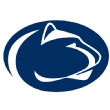
77. James Franklin, Penn State Nittany Lions: Franklin starred at quarterback for Division II East Stroudsburg in Pennsylvania. He started in 1993-94, ranked sixth in total offense among Division II players in 1984 and left with 23 team records. Franklin was nominated for Division II player of the year honors as a senior.

76. Bobby Wilder, Old Dominion Monarchs: Wilder starred at quarterback for FCS Maine from 1984 to 1987. He left as the school’s all-time leading passer with 4,493 yards (he currently ranks seventh) and was a co-captain in 1987 when Maine won a conference title.

75. Pat Narduzzi, Pittsburgh Panthers: Narduzzi began his career at Youngstown State by starting as a freshman linebacker for his father, Bill, and leading the Ohio Valley Conference in tackles. After Youngstown fired Bill, Pat transferred to FCS Rhode Island, where he started three seasons from 1987 to 1989.
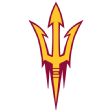
74. Todd Graham, Arizona State Sun Devils: Graham twice earned NAIA All-America honors as a defensive back for East Central University in Oklahoma. He played briefly with the NFL’s Arizona Cardinals before beginning his coaching career.

73. Scott Satterfield, Appalachian State Mountaineers: Satterfield quarterbacked then-FCS Appalachian State to the only undefeated, untied regular season in team history in 1995 (ASU lost in the playoffs) and earned first-team all-league honors. He started 27 games for the Mountaineers between 1992 and 1995.

72. Kirk Ferentz, Iowa Hawkeyes: The Pennsylvania native attended Connecticut, then a Division I-AA program, where he played linebacker and was a team captain as a senior in 1976. Ferentz earned three letters.
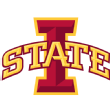
71. Matt Campbell, Iowa State Cyclones: Part of the Mount Union dynasty, Campbell played defensive line for three Division III national championship teams. After a bad experience at Pitt as a tight end in 1999, Campbell joined Mount Union, where he earned All-America honors and twice was named Ohio Athletic Conference Defensive Lineman of the Year.
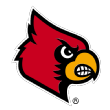
70. Bobby Petrino, Louisville Cardinals: Petrino starred at quarterback for his father, Bob, at NAIA Carroll College in Montana and twice earned All-America honors. He led Carroll to three consecutive league titles and earned league MVP honors in 1981 and 1982. Petrino also played basketball for the school.
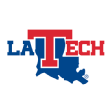
69. Skip Holtz, Louisiana Tech Bulldogs: Like “Rudy,” Holtz spent two years at Holy Cross Junior College in South Bend, Indiana, before transferring across the street to Notre Dame, where his father, Lou, was the new coach. Skip earned a letter for the Irish in 1986, when he appeared in 11 games on special teams and as a backup wide receiver.
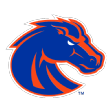
68. Bryan Harsin, Boise State Broncos: The Boise native stayed home to play for the hometown Broncos, where he was a reserve quarterback from 1996 to 1999. Harsin played sparingly; he attempted just 39 passes during his career.

67. Paul Petrino, Idaho Vandals: Like his older brother, Bobby, Paul stood out at quarterback for NAIA Carroll College, where their father, Bob, was head coach. Paul twice earned All-America honors, set 16 team records and guided the Fighting Saints to four league titles and a 36-6 record from 1985 to 1988.

66. Ron Turner, Florida International Golden Panthers: Turner spent two seasons at Diablo Valley College in California. He earned second-team junior college All-America honors at receiver, then he transferred to Pacific and led the Tigers in receiving in 1975 and 1976.
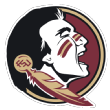
65. Jimbo Fisher, Florida State Seminoles: Fisher initially went to Clemson to play baseball but left after a semester and enrolled at Division III Salem College. He earned All-America honors at Salem and twice was named league player of the year. Fisher spent his final season at Samford College, where he was named Division III national player of the year in 1987. Fisher then spent a season in the Arena League.

64. John Bonamego, Central Michigan Chippewas: Bonamego walked on at Central Michigan as a wide receiver/quarterback and earned letters in 1985 and 1986. He twice earned the team’s Iron Man award as defensive scout team player of the year.
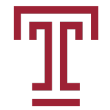
63. Matt Rhule, Temple Owls: After playing high school ball in State College, Pennsylvania, Rhule walked on as a linebacker at Linebacker U. He played for Penn State from 1994 to 1997 and lettered as a senior.

62. Clay Helton, USC Trojans: The son of a college and NFL coach, Helton was a reserve quarterback for Auburn and Houston. He lettered in his final two seasons (1993-94) at Houston, where his father, Kim, was head coach.

61. Mike Riley, Nebraska Cornhuskers: After quarterbacking Corvallis High School to an Oregon state title, Riley left for Alabama, where he was a reserve cornerback from 1971 to 1974. He won a national title in 1973 and lettered in 1974.

60. Paul Chryst, Wisconsin Badgers: Born in Madison, Chryst returned there to play for Wisconsin, where he earned three letters as a backup quarterback, tight end, linebacker and safety from 1986 to 1988.
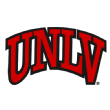
59. Tony Sanchez, UNLV Rebels: After two seasons playing wide receiver at a junior college in Oakland, California, Sanchez transferred to New Mexico State. He earned letters in 1994-95 and had 42 receptions as a senior for the Aggies.

58. Neal Brown, Troy Trojans: After a record-setting high school career — Brown finished second in Kentucky state history in receptions — he moved onto the University of Kentucky. He earned two letters there (1998 and 2000) and caught 10 passes, one for a touchdown. Brown subsequently transferred to UMass, where he was a two-starter for the then-FCS Minutemen.

57. Terry Bowden, Akron Zips: Although his father, Bobby, had just left West Virginia for Florida State, Terry stayed in Morgantown as a reserve running back for the Mountaineers. He earned two letters (1977, 1978) and had 17 career carries.
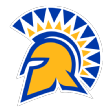
56. Ron Caragher, San Jose State Spartans: Although Caragher rarely saw the field as a backup quarterback at UCLA from 1986 to ’89, he had a valid excuse, as he played mostly behind Troy Aikman. Caragher played on four bowl-winning teams.
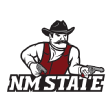
55. Doug Martin, New Mexico State Aggies: Martin played quarterback at Kentucky from 1981 to 1984 and earned letters all four seasons. He was a part-time starter during Kentucky’s 0-10-1 season in 1982. Injuries relegated him to holder later in his career.

54. Troy Calhoun, Air Force Falcons: Yet another former quarterback on the list, Calhoun started under center for Air Force in 1986. The year before, he was one of only two freshmen to earn a letter on a Falcons team that went 12-1.

53. Mark Dantonio, Michigan State Spartans: The Ohio native headed south to play college football at South Carolina, where he earned three letters as a defensive back from 1976 to ’78.
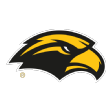
52. Jay Hopson, Southern Miss Golden Eagles: Hopson earned four letters as a safety at Ole Miss from 1988 to ’91. He received academic all-SEC honors all four years.
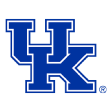
51. Mark Stoops, Kentucky Wildcats: Like older brothers Bob and Mike, Mark attended Iowa and played safety for the Hawkeyes from 1985 to ’88. He appeared on four bowl teams and had two interceptions at Iowa.

50. Tim DeRuyter, Fresno State Bulldogs. The California native played outside linebacker for Air Force from 1982 to ’84 and earned three letters. Air Force won a bowl game all three seasons.

49. Kevin Wilson, Indiana Hoosiers: Wilson walked on at North Carolina and then played center and guard for the Tar Heels from 1980 to ’83. He received a scholarship after two seasons, earned two letters and played for four bowl teams.

48. Dabo Swinney, Clemson Tigers: One of several Power 5 coaches to walk on at Power 5 programs, Swinney earned three letters at Alabama and played receiver for the Tide’s national championship team in 1992. He had seven career receptions for 81 yards.

47. Craig Bohl, Wyoming Cowboys: The Lincoln, Nebraska, native was part of Nebraska’s storied walk-on program. A reserve defensive back, Bohl played for the Huskers from 1977 to ’79 and reached two bowl games.

46. Ken Niumatalolo, Navy Midshipmen: Niumatalolo earned three letters as a reserve quarterback at Hawaii. He had 367 career rush yards and played for Hawaii’s first bowl team in 1989.

45. Matt Wells, Utah State Aggies: A Utah State quarterback who earned three letters from 1994 to 1996, Wells played on two league championship teams. He saw most of his playing time in 1994, when he threw 11 touchdowns passes and 11 interceptions.
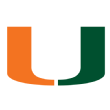
44. Mark Richt, Miami (FL) Hurricanes: Richt returns to Miami, where he played quarterback from 1978 to ’82. He spent most of his career backing up Jim Kelly but relieved the injured starter in 1982, when he passed for 838 yards with four touchdowns and nine interceptions.
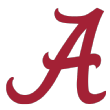
43. Nick Saban, Alabama Crimson Tide: Before becoming a master defensive tactician, Saban played several positions in the secondary for Kent State from 1970 to 1972. Alongside future NFL Hall of Famer Jack Lambert and future college coach Gary Pinkel, Saban helped Kent State win a MAC title in 1972.

42. Sean Kugler, UTEP Miners: Kugler earned four letters as an offensive lineman at UTEP, where Andy Reid was his position coach. As a senior in 1988, he helped the Miners to their only 10-win season. Kugler signed with the Pittsburgh Steelers as a free agent in 1989 and started at guard for Sacramento of the World Football League in 1991.

41. Seth Littrell, North Texas Mean Green: Back when fullbacks populated college football, Littrell was a good one at Oklahoma. He rushed for 11 touchdowns during his career, and he was a captain in 2000, when the Sooners won a national title and earned four letters at OU.
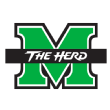
40. Doc Holliday, Marshall Thundering Herd: The Hurricane, West Virginia, native won a state wrestling title in high school before earning three letters as a linebacker for West Virginia from 1976 to ’78.

39. Mike MacIntyre, Colorado Buffaloes: MacIntyre played two years (1984-85) for his father, George, at Vanderbilt but transferred after George was fired. Mike then earned two letters at Georgia Tech as a free safety and returner for coach Bobby Ross in 1987 and 1988.
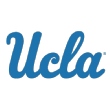
38: Jim Mora, UCLA Bruins: Mora walked on at Washington and quickly earned a scholarship as a linebacker-safety hybrid. He played from 1980 to 1983 and was part of three Top 10 teams, two of which reached the Rose Bowl.
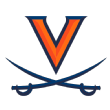
37. Bronco Mendenhall, Virginia Cavaliers: After helping Snow College in Utah to a junior college national championship as an All-American defender, Mendenhall moved to Oregon State. He started two seasons for the Beavers as a safety/linebacker and was a captain in 1987.
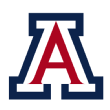
36. Rich Rodriguez, Arizona Wildcats: Sense a pattern here? Like many on this list, Rodriguez walked on at a major program (West Virginia) and earned a scholarship. The reserve safety lettered from 1982 to ’84 and recorded 54 tackles and three interceptions.

35. Kalani Sitake, BYU Cougars: Sitake played fullback at BYU in 1994 and, after an LDS church mission, again from 1997 to 2000. He served as a team captain in 2000 and averaged 4.3 yards per carry with one touchdown in his career. Sitake signed with the Cincinnati Bengals as a free agent and had a brief stay but quit because of injury.
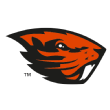
34. Gary Andersen, Oregon State Beavers: Before Napoleon Dynamite wore a Ricks College T-shirt, Andersen was an All-America center there in 1984. Andersen then transferred to Utah, where he earned letters in 1985 and 1986.

33. David Shaw, Stanford Cardinal: Shaw caught 57 passes for 664 yards and five touchdowns as a receiver at Stanford from 1991 to ’94. He played for coaches Dennis Green and Bill Walsh and also appeared in a track meet and a basketball game for the Cardinal.
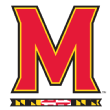
32. D.J. Durkin, Maryland Terrapins: The Youngstown, Ohio, native went across the state to play at Bowing Green, where he started at defensive back and outside linebacker from 1997 to 2000. Durkin led the team in sacks in 1998 and finished second in 2000. He recorded 28 tackles for loss in his career and twice served as a captain.

31. Dino Babers, Syracuse Orange: Versatility was Babers’ calling card at Hawaii, where he started at linebacker, safety and running back in his career. He led the team in rushing as a senior in 1983, then played one year in the CFL.
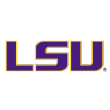
30. Les Miles, LSU Tigers: The Elyria, Ohio, native was an undersized offensive lineman at Michigan, where he played for Bo Schembechler from 1972 to 1975. Miles earned letters in his final two seasons and started at left guard in 1975.

29. Rod Carey, Northern Illinois Huskies: Before coaching offensive line for many years, Carey started three seasons at center for Indiana and became a team captain. He was named IU’s offensive MVP as a senior in 1993.

28. Bret Bielema, Arkansas Razorbacks: Bielema came to Iowa as a walk-on, earned a scholarship after his first season and left as a starting defensive lineman and team captain in 1992. He signed a free-agent contract with the Seattle Seahawks and also played in the Arena Football League.
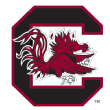
27: Will Muschamp, South Carolina Gamecocks: A walk-on safety at Georgia, Muschamp worked his way up to captain as a senior in 1994. He appeared in 44 games, including two bowl games, before immediately entering the coaching ranks.
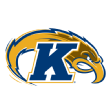
26. Paul Haynes, Kent State Golden Flashes: Haynes walked on as a defensive back at Kent State and immediately made an impact, as he led the team in interceptions as a freshman. He led the team in tackles as a sophomore and finished with 440 career stops. He earned All-MAC honors in his final two seasons.
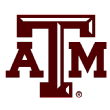
25. Kevin Sumlin, Texas A&M Aggies: Yet another Power 5 coach to begin his college career as a walk-on defender, Sumlin started four seasons at linebacker for Purdue. He led the team in tackles as a freshman (91), earned honorable mention All-Big Ten honors as a senior and led the Boilermakers to the Peach Bowl.

24. Bob Diaco, Connecticut Huskies: Despite enduring several injuries as an Iowa linebacker, Diaco finished strong with 134 tackles in his senior year, when he earned second-team All-Big Ten honors and was one of the team MVPs. He had 334 career tackles and twice led the team in stops.
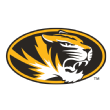
23. Barry Odom, Missouri Tigers: A prolific linebacker for Missouri from 1996 to 1999, Odom recorded 362 career tackles, which ranks seventh in team history. He had a key role on the 1997 team, which ended Missouri’s 14-year bowl drought, and served as a captain as a senior in 1999.

22. Nick Rolovich, Hawaii Rainbow Warriors: A two-time junior college All-America quarterback who led City College of San Francisco to a national title in 1999, Rolovich transferred to Hawaii. He started most of 2001 and went 8-1 as the starter while passing for 3,361 yards and 34 touchdowns. He set 19 team passing records and eight total offense records that fall. Rolovich had two short stints in the NFL and a longer stint in NFL Europe, and he played five years in the Arena Football League, with four teams.
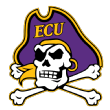
21. Scottie Montgomery, East Carolina Pirates: A star wide receiver at Duke, Montgomery twice earned team MVP honors and led the Blue Devils in receiving yards three times. He had 171 catches for 2,379 yards and 13 touchdowns in his career, and he set several special teams records. He played three seasons in the NFL and recorded 16 receptions.
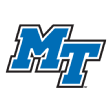
20. Rick Stockstill, Middle Tennessee Blue Raiders: A quarterback at Florida State from 1977 to ’82, Stockstill became a team captain and earned honorable mention All-America honors in 1981. He played in three bowl games for the Seminoles.

19. Justin Fuente, Virginia Tech Hokies: After two years at Oklahoma, Fuente clashed with coach John Blake and transferred. He revived his career at FCS Murray State, where he earned Ohio Valley Conference player of the year honors and was a Walter Payton Award finalist in 1999. Fuente left Murray State with several records, then played two seasons in the Arena League.
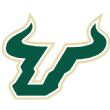
18. Willie Taggart, South Florida Bulls: Taggart started four seasons at quarterback for Western Kentucky, then an FCS school, and finished as one of the most decorated players in program history. He twice was a finalist for the Walter Payton Award and earned All-America honors as a senior in 1998.
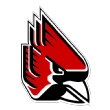
17. Mike Neu, Ball State Cardinals: The Indianapolis native started four years at quarterback for Ball State (1990-93). Neu led Ball State to a MAC championship as a senior and earned league MVP and offensive player of the year honors. He then played in the CFL and Arena Football League for three seasons.

16. Brad Lambert, Charlotte 49ers: An opportunistic defensive back and returner at Kansas State, Lambert led the Big Eight with three pick-sixes in 1984 and tied for fifth in the league with four interceptions. He was a second-team all-conference selection that year and earned four letters for the Wildcats from 1984 to 1987.

15. Lovie Smith, Illinois Fighting Illini: After helping Big Sandy High School to three Texas state championships, Smith went to Tulsa, where he played for John Cooper. He was named the league’s newcomer of the year in 1976. The defensive back received all-league honors three times and second-team All-America honors in 1978. Smith still ranks fifth on Tulsa’s career tackles list (367).
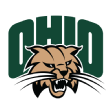
14. Frank Solich, Ohio Bobcats: Solich earned All-Big Eight honors as a fullback at Nebraska in 1965, when he averaged 5.4 yards per carry. Part of coach Bob Devaney’s first recruiting class, he became the first Husker to eclipse 200 rush yards in a game, and Nebraska went 38-4 during his career. Solich entered the Nebraska football Hall of Fame in 1992.

13. Bob Stoops, Oklahoma Sooners: A four-year starter at defensive back for Iowa, Stoops twice earned All-Big Ten honors and finished as Iowa’s team MVP in his final season (1982). He finished his career with 205 tackles and 10 interceptions. Stoops immediately began his coaching career at his alma mater.
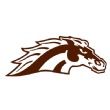
12. P.J. Fleck, Western Michigan Broncos: Fleck helped trigger Northern Illinois’ revival as a wide receiver. He earned All-MAC honors as a senior after leading the team with 1,028 receiving yards and six touchdowns. He remains NIU’s career leader in punt returns and ranks third in career receiving yards. Fleck played one game for the San Francisco 49ers in 2004 and was released in June 2006.

11. Rocky Long, San Diego State Aztecs: Long came to New Mexico as a defensive back but starred at quarterback, earned WAC offensive player of the year honors as a senior and was named a three-time team MVP. He then returned to defense in the CFL, where he played five seasons. He intercepted eight passes in 1975.
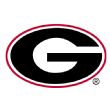
10. Kirby Smart, Georgia Bulldogs: Smart’s first head-coaching job brings him back to his alma mater, where he starred at safety from 1995 to 1998. He had 13 career interceptions, which rank fourth in team history, and twice led the Bulldogs in picks. Smart earned first-team All-SEC honors as a senior in 1998. He signed with the Indianapolis Colts as a free agent but was cut before the 1999 season.

9. Joey Jones, South Alabama Jaguars: Jones played wide receiver for Alabama from 1979 to 1983 and earned All-SEC honors as a senior. He is still tied for fifth on Alabama’s career touchdowns receptions list. A member of Alabama’s all-decade team for the 1980s, Jones played for the Atlanta Falcons in 1986 and spent time in the USFL.

8. Mike Gundy, Oklahoma State Cowboys: Long before mentoring prolific Cowboys quarterbacks, Gundy was one. He started four seasons, from 1986 to 1989, led Oklahoma State to a 20-4 record between 1987-88 and finished as the Big Eight’s career leader in pass yards and total offense. Gundy immediately began coaching after his Pokes playing career.

7. Kyle Whittingham, Utah Utes: A linebacker at BYU, Whittingham earned WAC defensive player of the year honors as a senior in 1981. He appeared in the first four Holiday Bowl games and earned defensive MVP honors in 1981. Whittingham went on to play in both the USFL and CFL, and he was a replacement player for the Los Angeles Rams during the NFL strike of 1987.

6. Mike Bobo, Colorado State Rams: The former Georgia quarterback earned four letters from 1993 to ’97 and led the team in passing his final two seasons. Bobo set team records for completion percentage and pass efficiency in 1997. He still ranks in the top five in team history in several other categories, including career touchdown passes (38) and career pass yards (6,334). The two-time captain ended his career by winning Outback Bowl MVP honors.
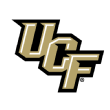
5. Scott Frost, UCF Knights: Frost blossomed after transferring from Stanford to Nebraska, where he had a 24-2 record as the team’s quarterback and helped the Huskers to a co-national title in 1997. As a senior, Frost became just the 10th player in college football history to eclipse 1,000 rush yards and 1,000 pass yards in a season. A New York Jets third-round draft pick, Frost played safety and special teams while spending time with four NFL organizations.

4. Kliff Kingsbury, Texas Tech Red Raiders: Kingsbury played a key role in Texas Tech’s air raid craze, and he set 17 NCAA records and 16 Big 12 records as the Red Raiders quarterback. He earned Big 12 offensive player of the year honors and won the Sammy Baugh trophy in 2002. Kingsbury’s NFL career didn’t pan out, and he spent time in NFL Europe and the CFL.
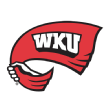
3. Jeff Brohm, Western Kentucky Hilltoppers: Brohm started three seasons at quarterback for Louisville and still ranks in the program’s top 10 in passing yards, completions, passing touchdowns and pass efficiency. A two-time team MVP with the Cardinals, Brohm spent seven seasons as an NFL backup. He went to the XFL’s Orlando Rage in 2001 and led the league in pass efficiency.
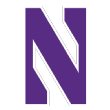
2. Pat Fitzgerald, Northwestern Wildcats: No current coach accomplished more as a college player than Fitzgerald, a leading figure in Northwestern’s mid-1990s renaissance. He earned consecutive national defensive player of the year honors (Nagurski and Bednarik) and consensus All-America honors at linebacker. A 2008 College Football Hall of Fame selection, Fitzgerald wasn’t drafted. He signed with the Dallas Cowboys as a free agent but had no pro career.
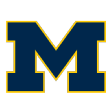
1. Jim Harbaugh, Michigan Wolverines: Harbaugh was an All-American QB at Michigan, where he won Big Ten MVP honors and finished third in the Heisman Trophy voting in 1986. His career pass efficiency mark (149.6) led the NCAA for 12 years. He was a first-round draft pick and played portions of 15 seasons in the NFL. He earned Pro Bowl and AFC Player of the Year honors in 1995.
This entry passed through the Full-Text RSS service – if this is your content and you’re reading it on someone else’s site, please read the FAQ at fivefilters.org/content-only/faq.php#publishers.
